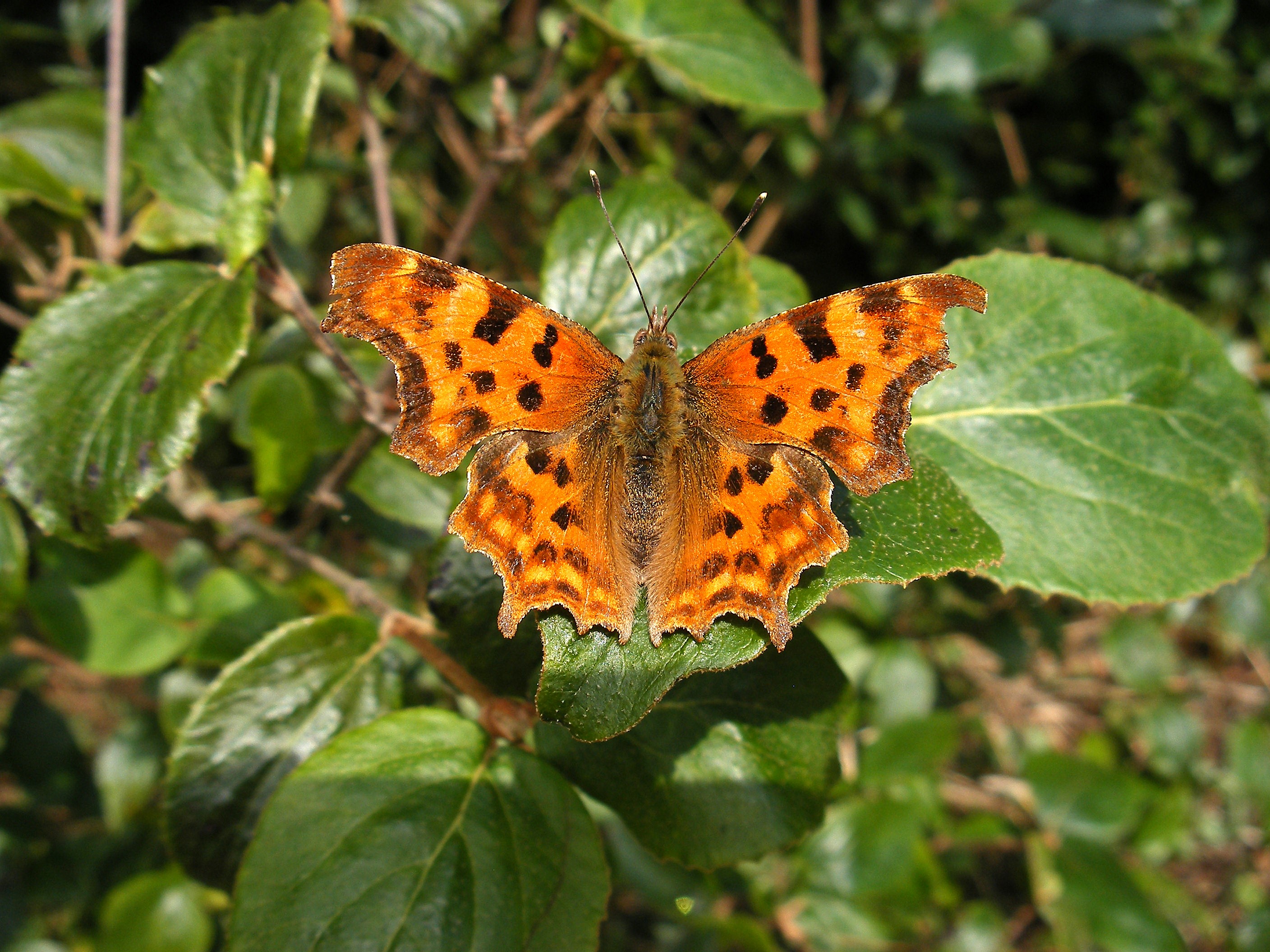Sickleholme Nature Notes
The first half of April produced plenty of sunny days, with the warmest being the 11th when the morning featured an EGGS/Ladies team event. Quite apart from some good golf, good company and good food, the course was literally buzzing as Honey Bees, Bumble-bees and Hover-flies seemed abundant. Amongst them a hoverfly lookalike, with a longer straighter proboscis, identified itself as a Bee-fly, a fascinating creature which hovers and feeds from a wide range of low growing flowers.
Work around the pond is clearly paying off, as the surface area is now clear enough to attract many insects and the Marsh Marigolds were early into flower. In other parts of the course, Wood Anemones were dense in sheltered areas and there were some nice patches of Sweet Violet. Orange-tip butterflies became a common sight, and other records included Peacock, Comma and the larger white species. The irregular wing shape of the Comma (see my photo image for this month) makes it possible to identify it even in flight, although the species gets its name from a small, curved mark on the underwing.
Bird records included passages of Pink-footed Geese, Curlews in the adjacent meadows, a number of Red Kite sightings and up to five Buzzards in the air together. Grey Herons are occasionally seen overhead, and I did once see one in the Upper Hurst Brook, but Matt photographed an early morning bird that had taken to stalking the fairways.
In response to one query, I can confirm that birds weigh much less than you might expect. Some examples of average weight are Blue Tit – 14gms, Blackbird -113gms and Wood Pigeon -566 gms.
The month end produced announcements that April had been the warmest and driest since well back in the last century. And the first day of May turned out to be a real scorcher!
Bryan Barnacle

Comma

